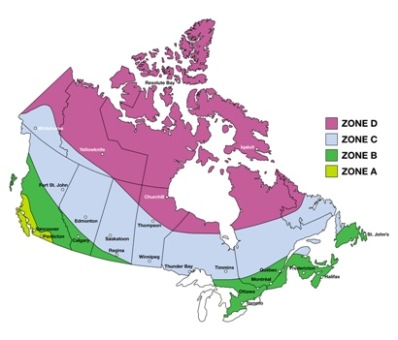|
Windows, Doors and Skylights
More About The Climate Zones
The four climate zones in Canada are based on an average annual temperature indicator called a Heating Degree Day (HDD). A Heating Degree Day is the annual sum of the degrees of the average daily temperature for all days below 18°C.
This accumulated sum is then averaged over a thirty year period to provide a good indication of the average temperature in a certain location. The higher the average HDD value, the colder a location and the longer the heating season is, usually with very cold winter temperatures. Colder locations also require less or no air-conditioning in residential homes and apartments.
The number of zones and their boundaries simply and logically group Canadian cities and regions together to ensure that the colder areas of Canada require the more energy efficient windows and sliding glass doors. Zone A is the mildest region in Canada and Zone D is the coldest region.
If you live in a location that is significantly higher in elevation than the surrounding area, then it is recommended that a product be purchased that is at least one zone colder than what is indicated on the zone map. This would apply especially to areas in southern and central British Columbia where the energy efficiency levels have been determined for major urban centres that are normally located in valleys.

Zone D: >8000 HDDs
Zone C: >5500 to <=8000 HDDs
Zone B: >3500 to <=5500 HDDs
Zone A: <=3500 HDDs
|



